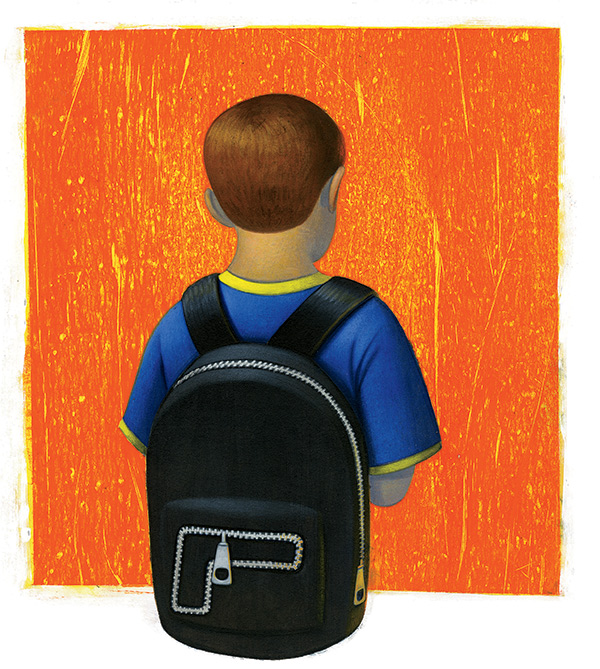
The violence in Parkland, Florida was the 18th school shooting of
The mass shooting in a school in Parkland, Florida was the 18th school shooting of 2018 and the eighth such event that has resulted in injury or death.
Gun violence in the United States, which results in approximately 33,000 deaths per year, is a growing social crisis. Over the past two decades, more than 500,000 Americans have been killed with firearms and millions more injured. While a lack of substantive funding for gun violence prevention research persists, work by dedicated scholars has nonetheless continued and sheds light on the immediate steps that could – and should – be implemented to reduce this level of violence and harm. As Dr. Lou Klarevas, author of Rampage Nation, articulated last fall at the TC Book Talk we hosted: Gun violence cannot exist without the presence of a firearm. Reducing the ease of access to guns – especially highly lethal military assault weapons such as the AR15 semi-automatic rifle – is a critical first step.
Time and time again, the United States falls devastatingly short in its efforts to prevent this level of violence. Moreover, the lack of firearms regulation at the federal level, particularly assault weapons, continues to exacerbate the problem.
In response to yesterday’s events and in an article it published a few months ago, The New York Times drew direct comparisons between the United States and several other countries. Time and time again, the United States falls devastatingly short in its efforts to prevent this level of violence. Indeed, as the article reported, “Americans make up 4.4 percent of the global population, but own 42 percent of the world’s guns.” Moreover, the lack of firearms regulation at the federal level, particularly assault weapons, continues to exacerbate the problem.
Emphasizing the importance of regulation at the federal level is crucial because there is currently no oversight as to how and when guns cross state lines. Chicago, for example, has historically high rates of gun violence, despite being situated in a state with relatively tighter gun control legislation than others. However, Chicago is just miles from Indiana, a state with comparatively lax gun laws.As has been now fairly well-documented, the majority of illegal guns in Chicago originate from other states (like Indiana) that have few restrictions on purchasing guns.
In our conversations around how to best prevent gun violence, it is therefore important to highlight thoughtfully researched pieces like the evidence presented by The New York Times. The media has historically been wont to depict the discussion around gun control efforts as “mixed” or up for debate among gun violence researchers. However, the scientific community is crystal clear in its understanding of this issue: More guns do not make our communities safer.
The media has historically been wont to depict the discussion around gun control efforts as “mixed” or up for debate among gun violence researchers. However, the scientific community is crystal clear in its understanding of this issue: More guns do not make our communities safer.
There are, in fact, legislative actions and policies that have been proven to reduce gun violence, yet – largely due to a lack of political will – are not currently being implemented. For example, research has demonstrated that the combination of increasing the accountability of gun sellers regarding who they sell to (which has implications for the unauthorized transfer of firearms) and enforcing rigorous “permit-to-purchase” policies helps limit gun access by high-risk subgroups. Similarly, comprehensive background check laws have been shown to reduce firearm injuries and laws promoting safer gun storage practices have been shown to reduce unintentional shootings by children. And safe and secure storage of guns is also a deterrent to violence by youth – yet a recent study of high school students demonstrated that among those youth who live in a home with at least one gun, one-third of these homes do not store guns safely and securely.

Rajan (left), Allegrante and Vasudevan argue that legislative actions and policies that have been proven to reduce gun violence are not currently being implemented, “largely due to a lack of political will.”
MAKING IT HAPPEN Rajan (left), Allegrante and Vasudevan argue that legislative actions and policies that have been proven to reduce gun violence are not currently being implemented, “largely due to a lack of political will.”There is some recent good news. First, many advocates of gun control were elected into public office just this past November. Network exit pollsin fact revealed that gun violence is second to healthcare as one of the top issues among voters in these elections. Second, Senator Dianne Feinstein and several Democratic colleagues have been seeking to reintroduce the Assault Weapons Ban.This would be an important step forward – especially since we know, from existing research by Dr. Klarevas, that mass shootings in particular declined significantly during the period of the original federal Assault Weapons Ban (1994-2004), including four years without a mass shooting, a goal that seems unattainable in the current climate.
The epidemic of gun violence and the human carnage in which it now results in America cannot become a “new normal.” A society free from the onslaught of daily shootings and the regularity of firearm violence – and the resulting trauma in our culture – should be a reasonable goal.
At the same time, it should also be acknowledged that gun access is one piece of a larger puzzle. The long-term prevention of gun violence will require – like every other public health issue – multiple levels of prevention: for example, availability of school-based violence prevention programming, after-school programming to support enrichment and building community and, of course, implementation of gun control legislation grounded in established evidence. These elements that are necessary for a comprehensive strategy to curb gun violence are the very ones whose existence has been increasingly threatened or whose federal funding has been cut altogether in the last year. Increasing comprehensive treatment and support for mental illness, moreover, is another componentof a long-term solution and also a commonly cited response, particularly by Republican elected officials – and most recently our current president – in the wake of these recurring tragedies. However, in addition to passing a law earlier last year that effectively facilitates the purchase of guns by individuals diagnosed with mental illness, these very lawmakers who advocate for better mental health support following mass shootings have also continued to advocate for healthcare plans that reduce funding for mental health initiatives, making it exceedingly harder and more expensive for many to receive the necessary support and care that might prevent or mitigate the gun violence often associated with mental illness. Because gun violence— from injury by gunfire to being the victim of homicide to suicide via firearms—is so pervasive across so many of our communities, this should be unacceptable to us all.
The epidemic of gun violence and the human carnage in which it now results in America cannot become a “new normal.” A society free from the onslaught of daily shootings and the regularity of firearm violence – and the resulting trauma in our culture – should be a reasonable goal. It is, however, one that will require a collective effort by all to persistently advocate for practices and policies, even once the headlines fade.
Sonali Rajan is Assistant Professor of Health Education. Lalitha Vasudevan is Professor of Technology & Education John Allegrante is Professor of Health Education.
Related: Arming Teachers: What are the Implications?
The views expressed in the previous article are solely those of the speakers to whom they are attributed. They do not necessarily reflect the views of the faculty, administration, or staff either of Teachers College or of Columbia University.